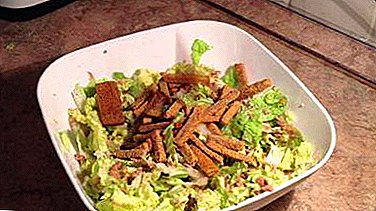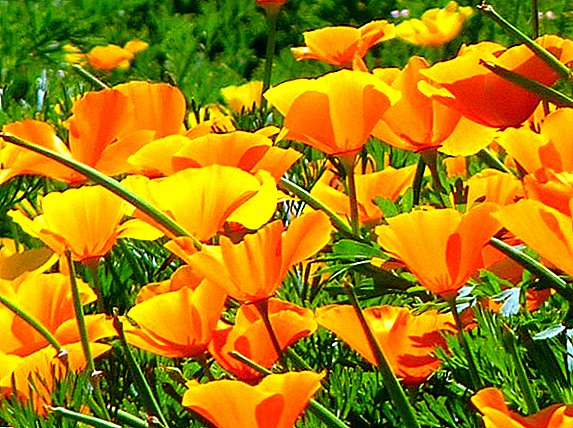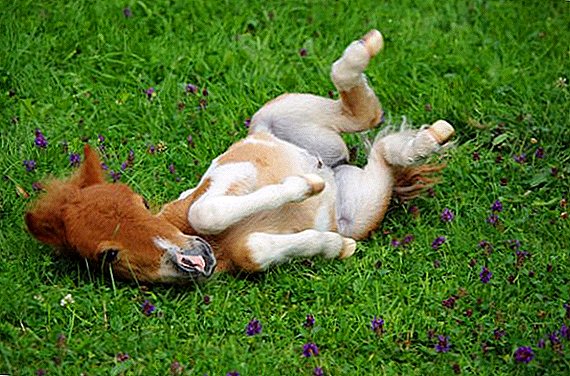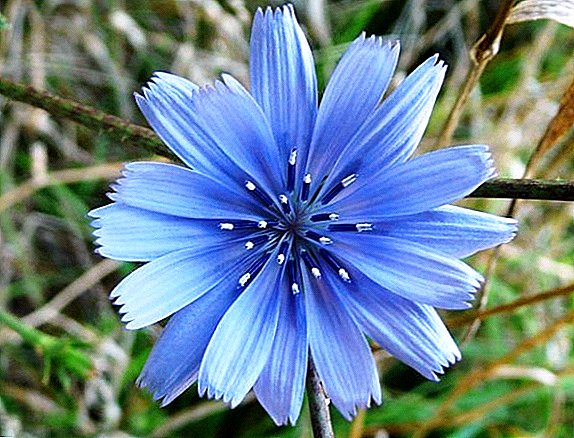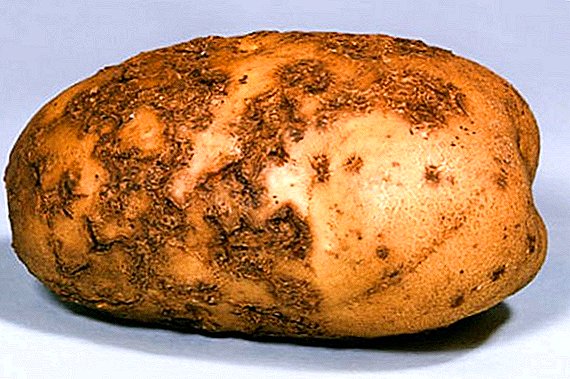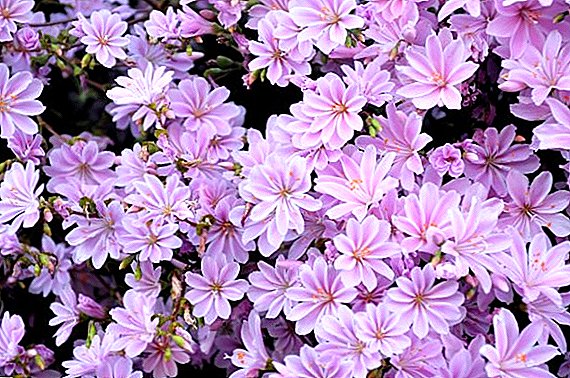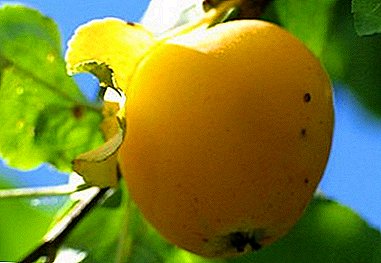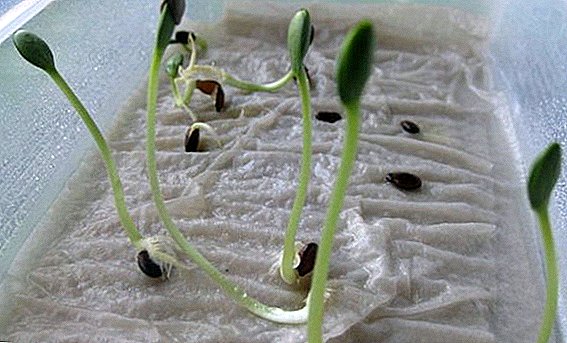 Growing seedlings is a troublesome process; every gardener tries to find some kind of innovation that makes it noticeably easier. A new way to reduce costs, save space and time, as well as to save as much as possible from possible development difficulties.
Growing seedlings is a troublesome process; every gardener tries to find some kind of innovation that makes it noticeably easier. A new way to reduce costs, save space and time, as well as to save as much as possible from possible development difficulties.
What a new way?
A recent method of sprouting seedlings in toilet paper without soil has already found many admirers. What is he good at? If we recall botany and biology, then not all seeds need nutrients in the soil for germination.  In the seed itself under the shell there is already an adequate supply of the elements it needs. Therefore, toilet paper, despite the lack of nutrition, is quite suitable as a substrate.
In the seed itself under the shell there is already an adequate supply of the elements it needs. Therefore, toilet paper, despite the lack of nutrition, is quite suitable as a substrate.
Its plus is that due to its softness, it allows the roots to sprout through it, without tangling and breaking, which is important for plants.
The method is good for the northern regions in late and cold spring. With it, a wide range of crops are germinated:
- Salad greens: cress, parsley, basil.
- Nightshade: tomatoes, peppers, eggplants.
- Pumpkin squash, squash, pumpkin, cucumbers.
- Other vegetables: carrots, cabbage, leek, onions.
- Flowers: petunia, marigolds, lilies of the valley, irises.
 The method for heat-loving and slow-growing plants is not relevant: they still need to be grown in the ground, moreover, such crops need good light, germination in a roll, for example, does not suit them.
The method for heat-loving and slow-growing plants is not relevant: they still need to be grown in the ground, moreover, such crops need good light, germination in a roll, for example, does not suit them.Others that are resistant to cool temperatures can be planted from a roll into open ground, for example, leeks or onions.
Did you know? Toilet paper as a hygienic product first appeared in China, this can be judged from the surviving records and drawings, which are about 600 BC. It was available to the imperial court.
Growing methods
Let us consider in more detail the two methods used in practice: growing seedlings without land on toilet paper using plastic bottles.
Cut along
This method is convenient because watering seedlings is much less. For sowing, a plastic bottle is cut along its length. On the toilet paper folded in several layers, after having been wetted with a spray, they are sown.  The seeds are gently pressed into the paper layer, creating the fossa effect. A plastic bag is worn over a plastic bag, imitating a greenhouse.
The seeds are gently pressed into the paper layer, creating the fossa effect. A plastic bag is worn over a plastic bag, imitating a greenhouse.
The advantage of a greenhouse is that condensation from evaporation returns to the paper “sediments”, therefore, watering the tap is rare. Another plus is that the seedlings do not stretch into growth, after the appearance of a pair of leaves, they develop the root system.
Cross section
This method differs from the previous one in that the bottle is cut not along, but across. Here the paper layer alternate with a film of polyethylene. The seeds, sown on a moistened paper layer, cover with another same layer, then a film, gently rolled into a roll and put it in a bottle.  The subtlety of the seed layout is that the seeds are at the top, closer to the light. In a cut bottle pour water about 2 cm and put in heat. Water is sometimes poured so that the seedlings do not experience a lack of moisture.
The subtlety of the seed layout is that the seeds are at the top, closer to the light. In a cut bottle pour water about 2 cm and put in heat. Water is sometimes poured so that the seedlings do not experience a lack of moisture.
When two leaves appear, the roll unfolds and dives the seedlings into separate containers. Plus that you can transplant, not trying to clear the paper, it is soft and will not prevent the roots from developing, as it should, gradually dissolving in the soil.
You will be interested to learn how to make the backlight for seedlings.This method is not much different from growing seedlings in Moscow in a roll, the difference is that rolled planting material is placed in a disposable cup and placed in a plastic bag, creating the effect of a greenhouse.
Important! It should be noted that the seeds should not touch each other and be at a distance of less than 2 cm. With the development of the roots, they are confused and can be damaged when picking.
How to grow seedlings in toilet paper
Special efforts and knowledge of how to plant seedlings in toilet paper will not be needed. What does not hurt - is to verify the feasibility of the method for the selected plants.
What is needed
Required items and materials:
- polyethylene film;
- paper roll;
- plastic bottle or cup;
- planting material;
- scissors;
- water and spray.

Action list
The sequence of actions is as follows:
- First layer - tape from the film.
- Put the paper base on the film and spray it with water.
- On a paper layer, seeds are placed a centimeter below the edge, 3 cm apart.
- Cover with a second paper layer, moistened.
- Last layer - film.
- Then the loose roll is rolled up.
- A roll of seeds is placed upside down into a glass or a plastic bottle cut into a glass, at the bottom of which a little water is poured.
 The moisture required for the seedlings will be absorbed by the paper base, and the film will provide the greenhouse effect.
The moisture required for the seedlings will be absorbed by the paper base, and the film will provide the greenhouse effect.Another similar method is planting seeds in a snail with toilet paper. Seeds are also sown on a ribbon of paper and rolled up into a snail, using a laminate substrate for insulation.
The method attracts 100% germination, but because of the crowding, most seedlings are strongly drawn, and the roots do not develop as they should.
Did you know? Mass production of toilet paper began only in the middle of the XIX century in the United States, it looked like sliced paper sheets packed in boxes. Perforated and rolled into rolls, it began to be produced at the beginning of the 20th century, the idea belonged to the Germans.
Proper care
The seedling spiked, the first leaf appeared - it's time to feed it. To do this, prepare an aqueous solution of the mineral complex, the dosage is taken two times less than what is said in the instructions. Top dressing is added with water in a cup. In the phase of 2-3 leaves, the dressing is repeated. Fertilize the same solution.  Watch the water level at the bottom of the tank, it should be added regularly.
Watch the water level at the bottom of the tank, it should be added regularly.
A hardened seedling with several leaves should be transplanted into a container with soil or into open ground, depending on the crop. The roll is carefully unwound, the strongest sprouts with developed roots are selected.
The picking goes right: the pots have holes, the ground is decontaminated, seedlings after transplanting are watered and placed in a warm, bright place. Further care as a normal seedlings. Those seedlings who are not ready for picking can be left in the cup for further rearing.
Important! If the weather is cloudy for several days in a row, sprouts are recommended to light for a few hours under the fitolamp.
Advantages and disadvantages of the method
Landless germination of seeds in toilet paper has both advantages and disadvantages.  Consider the benefits:
Consider the benefits:
- Saving time and space (pick up the ground, disinfect, clean up space for pots or drawers).
- Cleanliness and hygiene (it is impossible to get infected with fungi or viruses in this case).
- High germination rate.
- Emphasis on root development, not foliage.
- In consequence, earlier fruiting on open ground than during germination in the ground.
- Not all cultures fit.
- In the phase of the appearance of the leaves need feeding, in the paper there are no nutrients.
- If there are inaccuracies, you can ruin the seedlings: if the seedlings are overexposed, the roots will not develop; due to too tightly folded roll seedlings to suffocate.
At the same time, what kind of germination should be chosen, conservative in the ground or innovative without it, each gardener will decide for himself.


